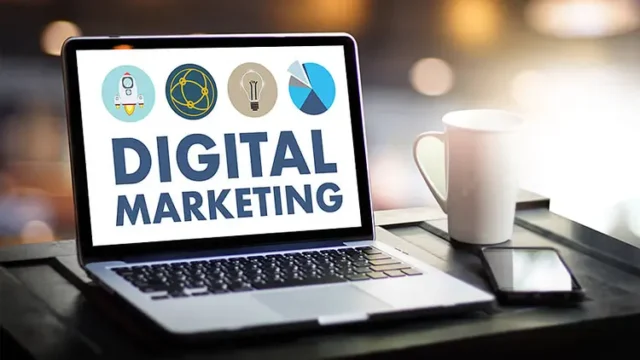In today’s fast-paced digital world, a successful marketing campaign is essential for any business looking to thrive. Whether you’re a startup or an established brand, creating an effective digital marketing campaign can significantly enhance your visibility, engage your audience, and drive sales. Here’s a step-by-step guide on how to craft a successful digital marketing campaign.

Table of Contents
Toggle1. Define Your Goals
The first step in creating a successful digital marketing campaign is to clearly define your goals. What do you want to achieve? Common objectives include:
- Increasing brand awareness
- Generating leads
- Boosting website traffic
- Enhancing customer engagement
- Driving sales
Setting specific, measurable, achievable, relevant, and time-bound (SMART) goals will provide you with a clear direction and help you assess your campaign’s success.
2. Know Your Target Audience
Understanding your target audience is crucial for any marketing campaign. Conduct thorough market research to identify:
- Demographics: Age, gender, location, income level, etc.
- Psychographics: Interests, values, behaviors, and pain points.
- Online Behavior: Where they spend their time online and how they interact with brands.
Creating detailed buyer personas can help you tailor your campaign messaging and select the most effective channels to reach your audience.
3. Choose the Right Channels
Digital marketing encompasses various channels, each with its unique advantages. Consider where your target audience is most active and select the appropriate platforms for your campaign. Common channels include:
- Social Media: Platforms like Facebook, Instagram, Twitter, and LinkedIn.
- Email Marketing: Sending newsletters or promotional emails to engage with your audience.
- Search Engine Marketing (SEM): Using paid ads on search engines like Google to drive traffic.
- Content Marketing: Creating blogs, videos, or infographics to provide value and attract leads.
- Affiliate Marketing: Collaborating with influencers or affiliates to promote your products.
4. Develop a Compelling Message
Your campaign message should resonate with your target audience and align with your goals. Here are some tips for crafting an effective message:
- Focus on Benefits: Highlight how your product or service can solve your audience’s problems or enhance their lives.
- Use Clear Language: Avoid jargon and ensure your message is easy to understand.
- Incorporate a Strong Call to Action (CTA): Encourage your audience to take specific actions, such as signing up for a newsletter, downloading a resource, or making a purchase.
5. Create Engaging Content
Content is at the heart of any digital marketing campaign. Create high-quality, engaging content that resonates with your audience and aligns with your message. Consider using a mix of formats, such as:
- Blog Posts: Informative articles that provide value and establish authority.
- Videos: Engaging visual content that can explain concepts quickly and effectively.
- Infographics: Visually appealing representations of data or information.
- Social Media Posts: Short, impactful content tailored to each platform.
6. Set a Budget
Establishing a budget is crucial for a successful digital marketing campaign. Consider all potential expenses, including:
- Advertising Costs: Paid ads on social media, search engines, or display networks.
- Content Creation: Costs associated with producing high-quality content, such as hiring writers or designers.
- Tools and Software: Marketing automation tools, analytics software, or email marketing platforms.
Having a clear budget will help you allocate resources effectively and ensure you don’t overspend.
7. Implement and Monitor
Once your campaign is ready, it’s time to implement it. Launch your campaign across the selected channels and closely monitor its performance. Use analytics tools to track key metrics, such as:
- Traffic: How many visitors are coming to your site?
- Engagement: Are users interacting with your content?
- Conversion Rates: How many users are completing your desired actions (e.g., signing up, making a purchase)?
Monitoring these metrics will help you assess the effectiveness of your campaign and make necessary adjustments.
8. Optimize and Adjust
Digital marketing is dynamic, and continuous optimization is essential for success. Analyze your campaign data to identify what’s working and what isn’t. Be prepared to:
- Adjust Messaging: If certain messages resonate better, pivot your campaign to focus on those.
- Change Channels: If a specific platform isn’t yielding results, consider reallocating your budget to more effective channels.
- Test and Experiment: Use A/B testing to compare different elements of your campaign, such as headlines, images, or CTAs, to determine what drives better results.
9. Evaluate Results
At the end of your campaign, take the time to evaluate its overall success. Assess whether you met your initial goals and analyze the data collected throughout the campaign. Consider questions like:
- What worked well?
- What didn’t perform as expected?
- What insights can we apply to future campaigns?
Documenting these findings will help you refine your digital marketing strategy for future endeavors.
10. Learn and Iterate
Digital marketing is a continuous learning process. Take the insights gained from your evaluation to improve your future campaigns. Experiment with new strategies, tools, and content types to stay ahead of trends and engage your audience effectively.
Conclusion
Creating a successful digital marketing campaign requires careful planning, execution, and ongoing optimization. By defining your goals, understanding your audience, and leveraging the right channels, you can craft a compelling campaign that drives results. Embrace the process, learn from each campaign, and continuously adapt to the ever-changing digital landscape to ensure your marketing efforts yield long-term success.


No responses yet